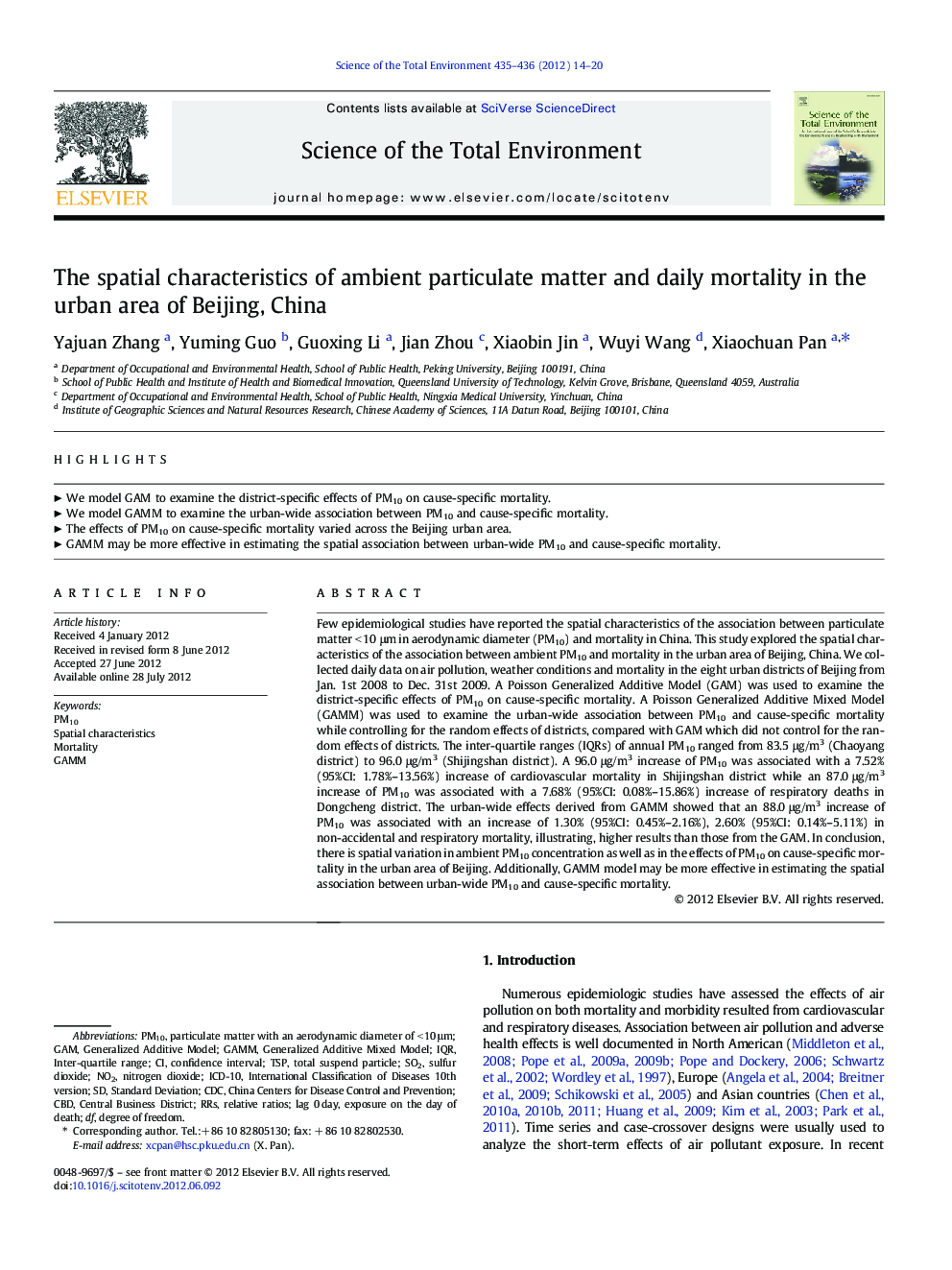| Article ID | Journal | Published Year | Pages | File Type |
|---|---|---|---|---|
| 4429234 | Science of The Total Environment | 2012 | 7 Pages |
Few epidemiological studies have reported the spatial characteristics of the association between particulate matter < 10 μm in aerodynamic diameter (PM10) and mortality in China. This study explored the spatial characteristics of the association between ambient PM10 and mortality in the urban area of Beijing, China. We collected daily data on air pollution, weather conditions and mortality in the eight urban districts of Beijing from Jan. 1st 2008 to Dec. 31st 2009. A Poisson Generalized Additive Model (GAM) was used to examine the district-specific effects of PM10 on cause-specific mortality. A Poisson Generalized Additive Mixed Model (GAMM) was used to examine the urban-wide association between PM10 and cause-specific mortality while controlling for the random effects of districts, compared with GAM which did not control for the random effects of districts. The inter-quartile ranges (IQRs) of annual PM10 ranged from 83.5 μg/m3 (Chaoyang district) to 96.0 μg/m3 (Shijingshan district). A 96.0 μg/m3 increase of PM10 was associated with a 7.52% (95%CI: 1.78%–13.56%) increase of cardiovascular mortality in Shijingshan district while an 87.0 μg/m3 increase of PM10 was associated with a 7.68% (95%CI: 0.08%–15.86%) increase of respiratory deaths in Dongcheng district. The urban-wide effects derived from GAMM showed that an 88.0 μg/m3 increase of PM10 was associated with an increase of 1.30% (95%CI: 0.45%–2.16%), 2.60% (95%CI: 0.14%–5.11%) in non-accidental and respiratory mortality, illustrating, higher results than those from the GAM. In conclusion, there is spatial variation in ambient PM10 concentration as well as in the effects of PM10 on cause-specific mortality in the urban area of Beijing. Additionally, GAMM model may be more effective in estimating the spatial association between urban-wide PM10 and cause-specific mortality.
► We model GAM to examine the district-specific effects of PM10 on cause-specific mortality. ► We model GAMM to examine the urban-wide association between PM10 and cause-specific mortality. ► The effects of PM10 on cause-specific mortality varied across the Beijing urban area. ► GAMM may be more effective in estimating the spatial association between urban-wide PM10 and cause-specific mortality.
